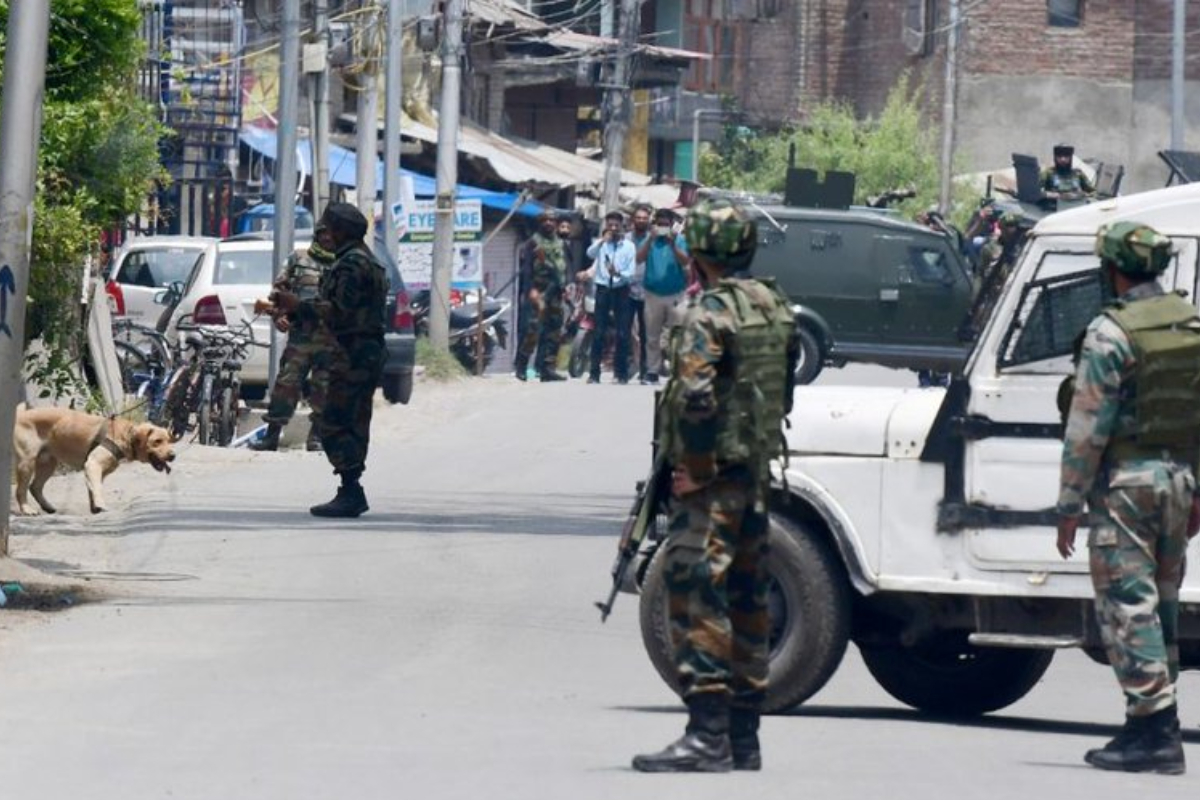

Pakistan’s obsession with Kashmir started much before the Islamic nation became a reality.

Kashmir emerged as a bone of contention between India and Pakistan seven decades ago. Despite fighting three overt wars and carrying out numerous covert operations, Islamabad has clearly failed in its objective to annex Jammu and Kashmir. Pakistan’s obsession with Kashmir started much before the Islamic nation became a reality.
In 1944, Mohammad Ali Jinnah, the founder of the Muslim League visited Jammu and Kashmir. His month-long visit to the Valley with the intention to persuade people to be a part of his ideology largely failed to cut any ice. On his way back to Rawalpindi via Baramullah- Muzaffarabad route, he was heckled off the stage and garlanded with shoes at a small gathering in Baramullah town. He never forgot this humiliation. So when Pakistan was eventually born, the prime concern for Jinnah and his aides was the state of Jammu and Kashmir.
According to their own accounts, the fear of Jammu and Kashmir becoming a part of India was perceived as an existential threat to Pakistan. The argument about this threat was based on military and economic assessments. The Pakistani military argued that the security of their country was at grave risk if Indian troops were stationed at Kashmir’s western borders. In an event of war, it gave India a chance to cut off Lahore, Sialkot, Gujarat and Jehlum from the Rawalpindi military base. Primarily an agrarian economy, much of Pakistan was dependent on the rivers flowing from Kashmir Valley. Thus, Indian control over Jammu and Kashmir would deprive them of their main economic resource. So there was a strong belief in Islamabad that Kashmir had to be annexed to keep Pakistan safe – militarily as well as economically.
ALSO READ: US Is Set To Lose Its Game Against India
Like many other Indian states, Jammu and Kashmir was a Muslim-majority princely state ruled by Hindu Dogra ruler Maharaja Hari Singh. Culturally and ethnically, Jammu and Kashmir was too diverse to fall prey to Jinnah’s binary narrative of religion upon which Pakistan was later conceived. It was natural for the large population of the region to distinguish itself from such a binary conception.
As the partition happened, Maharaja Hari Singh was still undecided about his choice of dominion. He asked the governments of India and Pakistan to sign a standstill agreement, and the Pakistani government readily signed. Despite that, the Pakistani establishment hatched a plan to annex the state by force with army major Akbar Khan writing a detailed plan for armed revolt inside Kashmir. Money and arms were the main requirements and officially Pakistan was to deny any involvement. A so-called voluntary force of Pakistani regulars and tribesmen was gathered into an irregular force supported overtly and covertly by Pakistani army officers. The tribesmen were hired and enticed with a promise of returning back with fortunes of loot. Four thousand military rifles along with ammunition meant for Pakistan’s Punjab Police and officially marked as unfit for military use and shown destroyed in Karachi sea were distributed among the raiding force.
Finally, on October 22nd 1947, swaths of men descended upon the Valley from Uri towards Baramullah. The marauding men went on a spree of looting both Muslim and non-Muslim households and shops and setting them on fire. They butchered and raped non-Muslims along the way to Srinagar. Even the nuns at a convent in Baramullah were not spared. Maqbool Sherwani, a young man, was crucified in the town of Baramullah. He had misled the raiders into taking the wrong direction while they were marching towards Srinagar the previous night. As these men focused on looting and raping the ordinary Kashmiris, their progress towards Srinagar was dismally slow. Maharaja’s forces were no match to these trained marauders and they were in complete retreat. Maharaja, fearing the worst, himself fled to Jammu on October 25.
In Srinagar, women armed with sticks and rifles patrolled the streets with the hope of defending themselves against the savagery the raiders had unleashed in much of north Kashmir. As time ran out and voices of desperation grew, Maharaja signed the Instrument of Accession with the Government of India. Indian forces landed in the Valley on October 27 and started pushing out the raiders back towards Pakistan much to their dismay. The Indian Army was able to send them back to Chakoti near Uri and took back the besieged garrison in Poonch town. By that time, both the governments of India and Pakistan got officially involved. Thus a ceasefire was declared and a ceasefire line, which was later known as the Line of Control (LoC) was drawn with both forces holding on to their respective areas. In the subsequent months, Pakistan consolidated on the areas illegally occupied by its forces – finally giving shape to its long-drawn plan of annexing Jammu and Kashmir.
In the next couple of years, Pakistan made numerous attempts to annex the state. From Operation Gibraltar during the 1965 Indo-Pak war to the 1988 Operation Topac, which hinged upon cross-border terrorism and saw the emergence of a deadly insurgency in Kashmir were part of the same doctrine which was initiated on October 22, 1947. But today, three decades of cross-border terrorism under Operation Topac largely stands defeated in Jammu and Kashmir. That said, Pakistan’s obsession with annexing the region doesn’t seem to die down. With terrorism a part of its state policy, Pakistan is unlikely to give up on this obsession. It will keep on making such futile attempts to make its delirious unfulfilled dream come true.